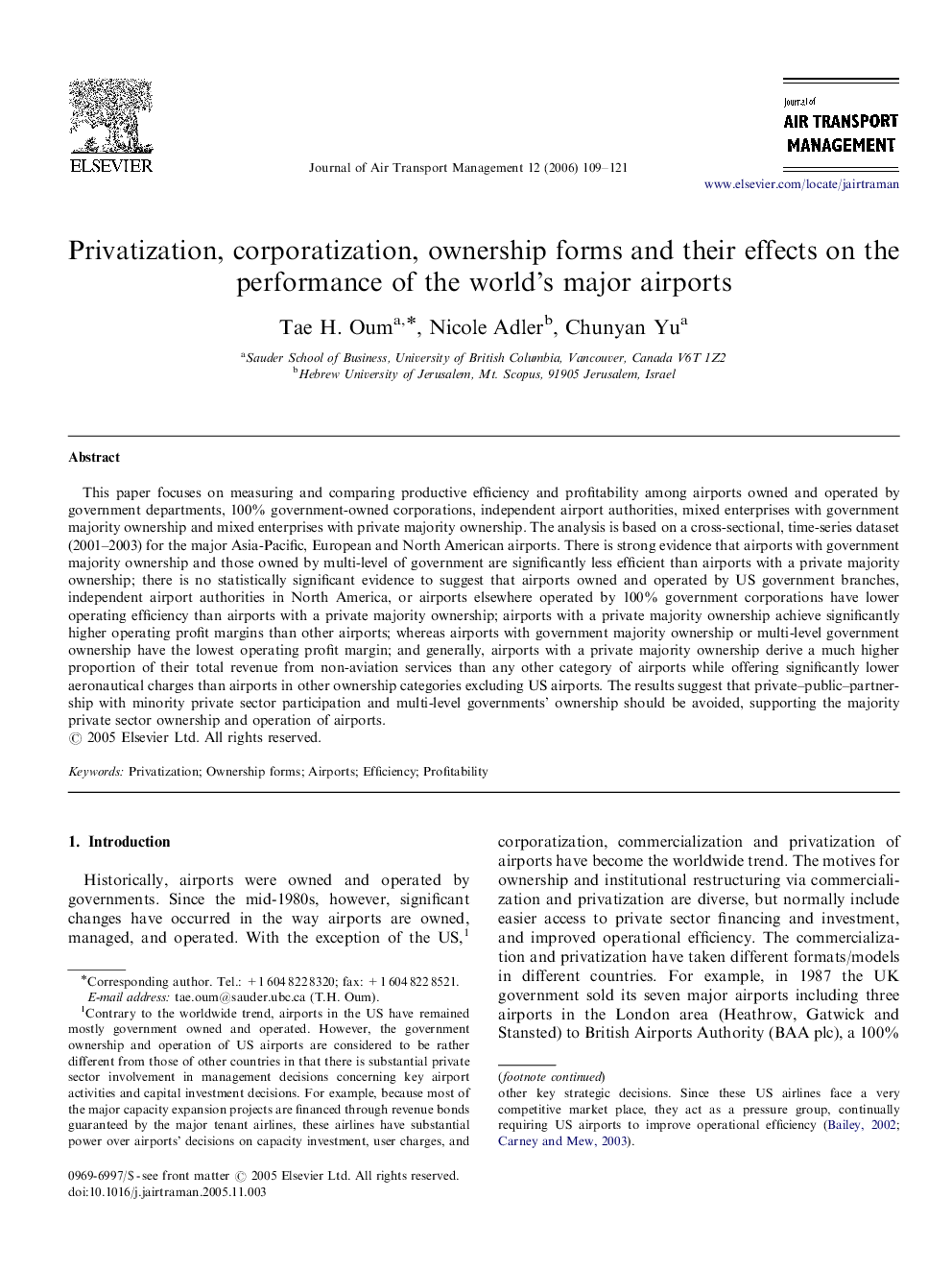| Article ID | Journal | Published Year | Pages | File Type |
|---|---|---|---|---|
| 1031379 | Journal of Air Transport Management | 2006 | 13 Pages |
This paper focuses on measuring and comparing productive efficiency and profitability among airports owned and operated by government departments, 100% government-owned corporations, independent airport authorities, mixed enterprises with government majority ownership and mixed enterprises with private majority ownership. The analysis is based on a cross-sectional, time-series dataset (2001–2003) for the major Asia-Pacific, European and North American airports. There is strong evidence that airports with government majority ownership and those owned by multi-level of government are significantly less efficient than airports with a private majority ownership; there is no statistically significant evidence to suggest that airports owned and operated by US government branches, independent airport authorities in North America, or airports elsewhere operated by 100% government corporations have lower operating efficiency than airports with a private majority ownership; airports with a private majority ownership achieve significantly higher operating profit margins than other airports; whereas airports with government majority ownership or multi-level government ownership have the lowest operating profit margin; and generally, airports with a private majority ownership derive a much higher proportion of their total revenue from non-aviation services than any other category of airports while offering significantly lower aeronautical charges than airports in other ownership categories excluding US airports. The results suggest that private–public–partnership with minority private sector participation and multi-level governments’ ownership should be avoided, supporting the majority private sector ownership and operation of airports.
